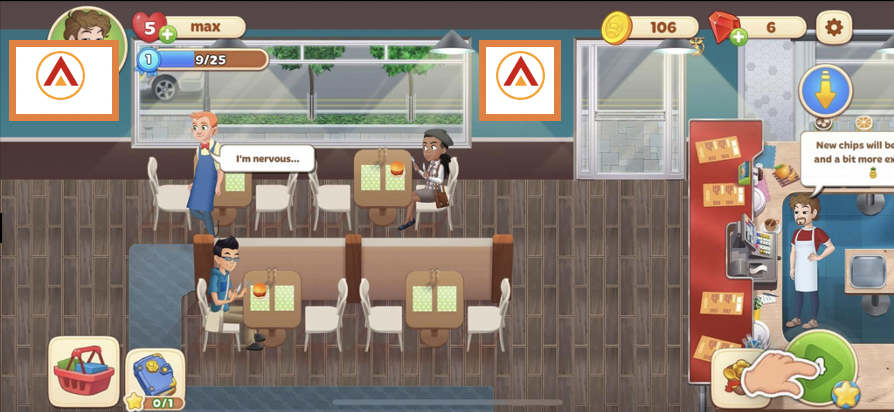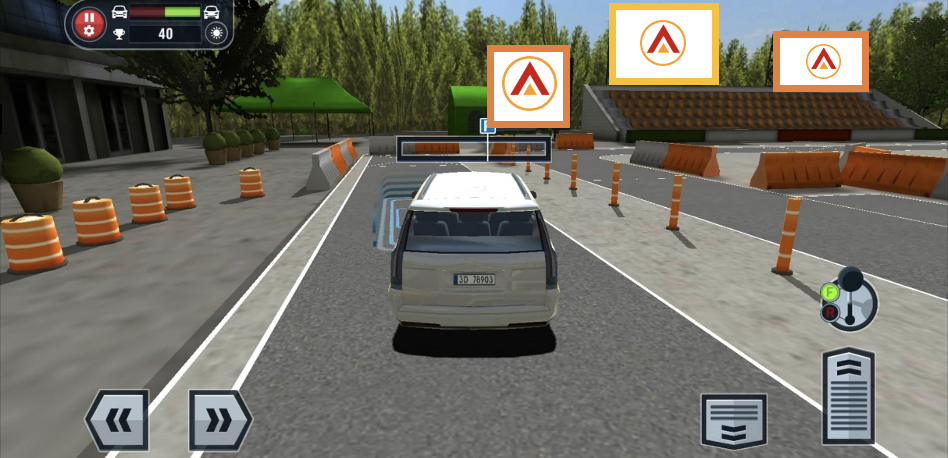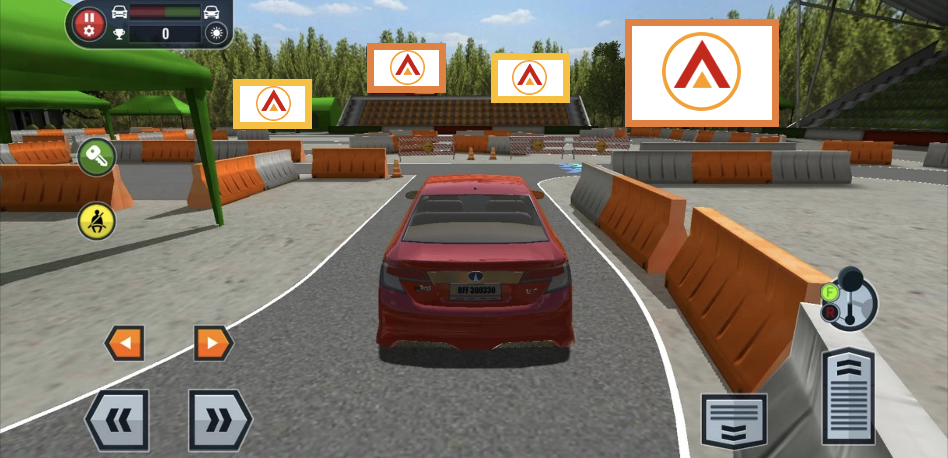Placing AdInMo Ads – A Designer’s Guide

Where’s the best place to integrate in-game brand ads in your own games? This is a multi-layered issue, and the answer will vary greatly based on your specific game, but here are some general best practices that will help you rack up as many impressions as possible!
Two things to remember: Size and Time
AdInMo ads comply with the Interactive Advertising Bureau (IAB) standards which recommend best practices for what constitutes a valid ad impression in games. If your ads don’t meet these standards, then they won’t count as valid impressions, meaning that they won’t generate any revenue for you.
There are two key elements of an ad instance in a game:
Size:
To count as a valid impression, your ad must take up at least 2% of the space on the screen.
Time:
To count as a valid impression, your ad must be on screen for at least 10 seconds, within a one-minute period.
Here are five tips to help you place your ads, and ensure your game is optimised for valid impressions.
1: Place ads where players spend the most time
If there are key screens in your game where the player spends a lot of time, such as shop screens, equipment management screens or central hubs, then take advantage of this fact and place your in-game ads here. Of course be careful not to place too many units on these screens, as this may negatively impact functionality and player experience.

Figure 1: AdInMo ads on the main gameplay screen of a cooking game.
2: Use Grouping to extend the screen time of an ad
The grouping feature allows you to place a number of ad placements in the same group, so that they all display the same ad when the player encounters them in a play session. This can be a good way to reach the 10 second time requirement, particularly in a fast-moving game such as a racing or endless runner game.
Place a series of ads in succession in an area the player will be passing through and group them to guarantee a full impression even if some instances of the ad pass off the screen within the one-minute window.

Figure 2: A screenshot from a racing game, showing different coloured billboards representing different ad groupings.

Figure 3: The same ad groupings from above continued elsewhere in the level, increasing the chances of an impression.
3: Consider the angle the player will be approaching from
It’s important to consider the angle the player will approach from in games with dynamic cameras, particularly player-controlled cameras.
While the ad may take up sufficient screen time and space to create a valid impression when you’re viewing it in-engine, the varying angles from which the player can approach it may nullify one of these requirements.
So be mindful of the different ways the player could encounter the placement, and design the placement accordingly; this may mean increasing the size, changing the shape, or moving it to another location entirely. Placing in-game ads, like all aspects of game design, is an iterative process.
4: Take advantage of static screens
Game sections where the camera remains fixed and the same objects remain on screen for a long time are ideal for in-game brand ads.
Examples include single-screen puzzles in a puzzle game, or combat screens in an auto-battler.

Figure 4: An example of an ad being placed on a static screen in a puzzle game.
5: Keep the one-minute window in mind
As long as your ad is on screen for 10 seconds within a one-minute period, the time element of the impression will be fulfilled.
This means you can spread out your ads within a level or within a section of a level and avoid bombarding the player with lots of ads all at once that may break their immersion and ruin their experience.
More…
The Future of In-Game Advertising
We’re inviting all free-to-play publishers and developers to sign up to our developer programme for early access to the AdInMo’s InGamePlay SDK 3.0 New features include clickable ad units and hybrid monetization solutions. Sign up below and a member of Team AdInMo...
PG Mobile Game Awards 2024
Nominated again! Please help us win this year🤞 Please be kind to the good guys of in-game advertising and take 1 minute to vote for us in the Pocket Gamer Mobile Game Awards, Best Advertising & UA Service Vote AdInMo if you believe in: 🕹️ Immersive ads make...
Gaming shines on La Croisette: A CEO’s week at Cannes Lions
Walking up and down the perennially sunny La Croisette last week I was really excited about how this year’s Cannes Lions 2024 truly spotlighted the marketing industry's increasing focus on gaming as an innovative, impactful, and scalable channel to reach engaged...


-3.png)

